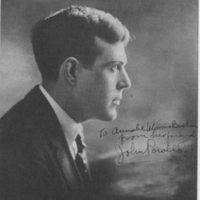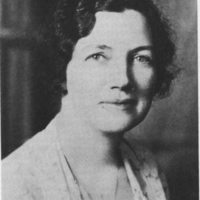1935 Festival

"[T]he history of the White Top Folk festival cannot be understood apart from the conflicted personal and working relationship between John Powell and Annabel Morris Buchanan. To Buchanan, Powell was at once teacher, role model, co-worker, intellectual mentor, and partner in a personal relationship that was—for her at least—perilous and painful." [All That is Native and Fine, p. 223]

Largely overshadowed by the presence of John Powell and later Richard Chase, Annabel Morris Buchanan was the animating spirit of the White Top Folk Festival.
"Nationwide publicity about the White Top Folk Festival in newspapers and magazines helped to make Buchanan a well-known public figure. It allowed her to meet many composers, musicians, critics, writers, and folklorists. The name White Top came to symbolize Buchanan to the general public, to other folklorists,and even to herself.She often spoke of her 'White Top work', referring to all of her many activities in the sphere of folklore."
["Annabel Morris Buchanan: Folk Song Collector," p. 29]
While the rigorous selection process of musicians, with emphasis on music and dance with roots in the Anglo-Saxon tradition, led to early success, culminating in Eleanor Roosevelt's visit in 1933 when crowds in excess of
10,000 crowded onto White Top mountain, in later years the novelty wore off as festival organizers came to rely on the core group of the most popular musicians like Sailor Dad Hunt and C. B. Wohlford, and introduced folk
elements like sword- and morris-dancing that had no cultural antecedents in the southern mountains but were popular with academics and elites. Crowds (and ticket revenue) fell, even as academic interest grew.
Of the three organizers, Annabel Morris Buchanan, who, by inviting Mrs. Roosevelt to the Festival in 1933, did more than anyone to ensure a lasting legacy for White Top, was the most disillusioned.
Buchanan was also at odds with John Blakemore over the direction the festival should take. Buchanan was passionately—one could say fanatically—commited to the cultural aspects of the festival and concerned with treating the musicians fairly, while Blakemore was primarily interested in the festival's commercial potential.
Troubetzky ("Music on the Mountains") wrote that in 1935 Robert W. Gordon, of the Library of Congress , was making recordings at White Top. But Todd Harvey, Curator of the Lomax Collections at the American Folklife Center stated in an email that he could find no evidence that Gordon made White Top recordings in 1935. He states that, in fact, John and Alan Lomax made 1935 White Top festival recordings, Aug 16-17, on behalf of the Library of Congress, now in the American Folklife Center archive. See discography at the end of this Exhibit.